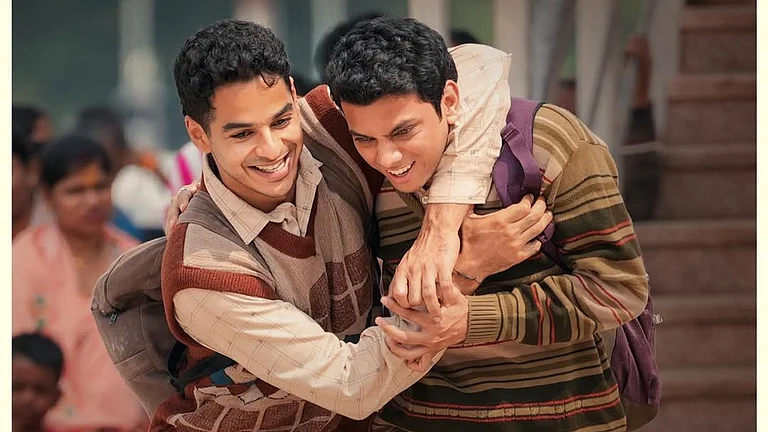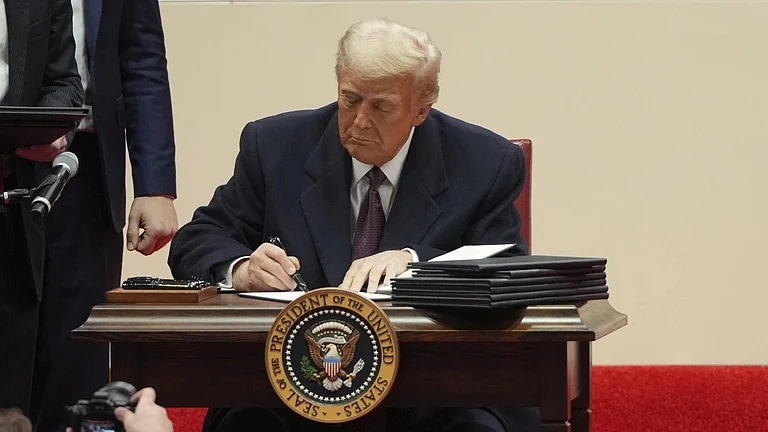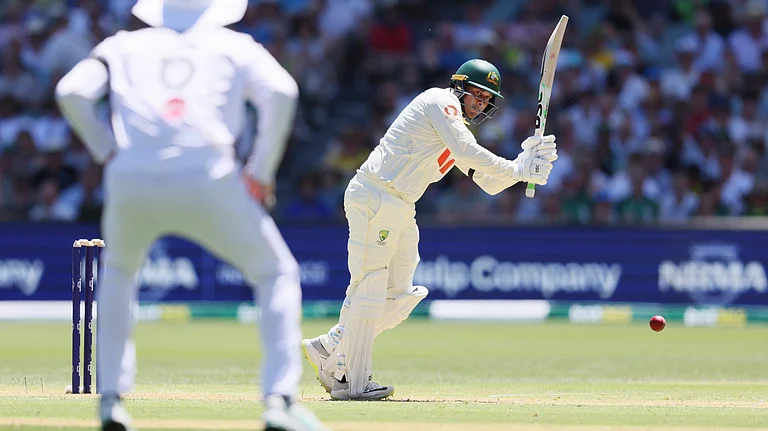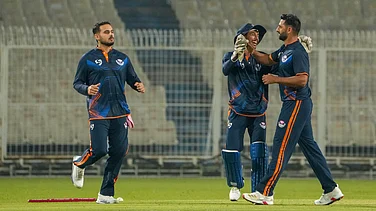Even though the 'Final Frontier' couldn’t be breached eventually, India came very close to doing so with a thumping victory in the second Test Match against South Africa, bouncing back from an equally comprehensive innings defeat in the first Test match. (More Cricket News)
India, who had never won a Test match at Newlands in Cape Town, scripted history in this shortest Test match of all time, just as they had done at unassailable Gabba, in Australia, almost exactly three years ago, in 2021.
And that is the most positive takeaway from this ‘blink and you miss it’ Test series which cried out for at least another Test match that would have decided a riveting series, one way or the other.
The first Test match was a disappointment, particularly the way we crumbled in the second innings where Virat Kohli alone stood firm, after a fairly decent first innings total, thanks to a wonderful century from KL Rahul, making his umpteenth comeback. Surely he can be compared to Mohinder Amarnath in the matter of comebacks, after being written off time and time again.
But disappointments notwithstanding, it’s heartening to see India bouncing back and winning Test Matches where they have never won before, and winning them in style.
And a typically green, responsive, Newlands pitch once again saw the emergence of the Indian fast bowling unit, even with the absence of Mohammad Shami in its ranks, as one of the most potent, feared pace attacks of the world at this time, capable of blowing away a Test Side within a session, for just a handful of runs.
They had looked dispirited in the first test, seemingly out of ideas, bowling all over the place and leaking runs, as South Africa piled on 400 runs. Dean Elgar in his last but one Test after a 12-year career, played a brilliant, typically gritty, knock and with support from two unlikely names, built up a huge first innings lead, from where the Proteas just wouldn’t let India back in, Virat Kohli‘s brilliance notwithstanding.

The pacers just hadn’t looked the part in that game.
But they learnt their lessons quickly and came back with a vengeance on this surface, hitting the deck hard and making use of the steep bounce and swing and lateral movement to devastating effect, sweeping away the South African batting away in no time, for their smallest Test Match total in a hundred years.
Pink Ball Tests played under lights have often gotten over in less than 2 days in the past, but this was the first time a red ball test match had finished so quickly, even before the crowd had properly settled down to watch, so to say.
And there was so much going on in the field within such a short span of time that you almost felt cheated, that the match and indeed the test series itself had ended so quickly, with each side having won a match apiece, and itching undoubtedly,to get back into battle again in a decider.
But unfortunately, that was not to be as the shortest ever Test match in the history of Test Cricket dating back 147 years to 1877, got over in one and a half days. It was almost like watching a T20 game in reverse. Only here it was the batters who were under serious pressure from the bowlers, as wickets fell in flurries and not the other way round, as usually happens in T20s, where it’s not uncommon to see 50 runs scored off the last 2 overs of a match, turning the game on its head.
Instead, here an unbelievable six wickets tumbled in the space of just 11 balls, as India seemingly coasting along at 153 for 4 and eyeing a huge first innings lead with their two in-form batsmen at the crease, suddenly imploded to 153 all out. And if you weren’t watching those 11 balls for some reason, you had missed an absolutely amazing bit of Test match history.
ALSO READ: India Jump To Top Of WTC Points Table
As the TV commentators pointed out, the bowling analysis entered into the scorebook by the scorers, bizarrely read W 0 W 0 W 0 W 0 W (excluding the run out which wouldn’t show in the bowling figures), as the crowd went wild.
On a fast, lively pitch, reminiscent of Perth at the height of its ‘bully soil’ track heydays, the bounce was uneven and deliveries climbed steeply from the wicket and routinely carried through chest high to the ‘keeper standing well back, with the odd one eluding his despairing leap and going for four byes over his head.
There was movement in the air and off the wicket which kept the batters guessing, and fearing that one ball that would have 'their name on it', so to say.
And the slips cordon had a field day pulling off sharp chances flying above their heads, or diving forward to snap up snicks dying on them.
On such a wicket you can never really ‘settle down’, never really be ‘in’, irrespective of how long you had batted, or the score you were at. And it was just a matter of time till you got the unplayable ball that knocked you over. The only way to score on such a surface seemed to be to counterattack and play your shots while the going was good, and hope to get to a decent individual score.
Which is not the traditional or best way of batting in a Test Match, but of course that is changing rapidly now and the pure breed of Test batters are now more or less, a thing of the past. Cricket South Africa however, must pull up their socks and provide wickets which promote a fair contest between bat and ball. This surface surely fell short on that count.
A record 23 wickets tumbled on the first day of the Test Match as both sides finished their first innings and South Africa had lost a third of their second innings wickets also, by the time the day came to a close.If the intention was to finish off India in the series, it backfired spectacularly on them.

Aiden Markram’s remarkable 106 in a team total of 176, where the next highest score was 12 by Dean Elgar, was an amazing display of backing yourself and playing your shots. He really seemed to come of age with this innings after a couple of years in the batting wilderness, following a glittering start to his Test career some years ago.
For the most part, the Indian batters adopted the same approach with Virat Kohli standing out in the first innings, yet again. He seems to be batting better than ever before.
And yet the pitch with its smattering of green, had looked good enough for South Africa to elect to bat after winning the toss, and as Jasprit Bumrah said at the post match presentation ceremony, India would probably have done the same, had they won the toss.
The South African fast bowlers fought back spectacularly and restricted the Indian first innings lead to under a hundred runs, but there never really was a way back for them in this Test Match, after being dismissed for 55, their lowest in a hundred years.
India losing six wickets at the same score is a record in Test cricket, as are the six ducks in their scorecard, the joint highest in a Test innings, ever. These are records which India would find hard to live down, even if the bowling unit soon got them right back on top again in the second innings, Aiden Markram notwithstanding, leaving the batters just 79 to get for a win.
In the light of how this match went, who knows what could have happened if the target was a hundred runs more. But Jasprit Bumrah and his band of brothers in the pace attack, firmly shut the door on any such aspirations that the Proteas may have had.
ALSO READ: Fans Go Gaga After India's Win
And it was heart-warming to see the regard and respect that the Indian team gave to Dean Elgar as he walked away from a Test match ground in a South African jersey one last time. He has been such a rock for them over the years. And indeed this easy mixing and camaraderie amongst international players has been one of the big positives coming out of franchisee cricket. Something that needs to be preserved.
It’s time now to put away the whites and the red ball again and it’s on to yet another IPL, where new stars will emerge and new careers will be forged, followed immediately by the T20 World Cup. And then, towards the end of the year it will be the big one, with India heading back to Australia for a full Test series. Surely that would rank as the unofficial World Test Championship between the two most dominant teams in world cricket.
A lot of work remains to be done before that however, if India are to make it three-in-a-row in Australia.
But they can do it. And that is the belief that India is taking away from this short series in South Africa.
The views and opinions expressed are those of the author. The author is a veteran Wing Commander of the Indian Air Force, who has played Ranji Trophy for Services.


























